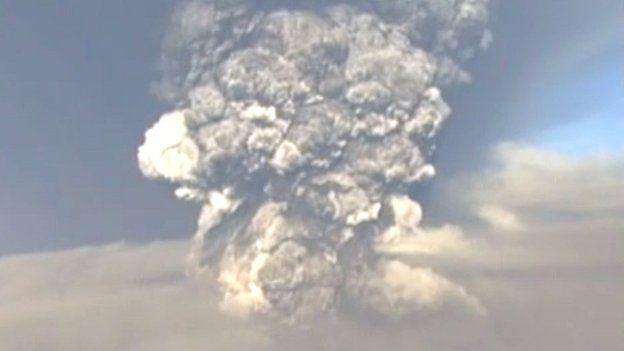Study to help ash mapping for flights
- Published

New discoveries about ash clouds could help predict where planes can safely fly following volcanic eruptions, Edinburgh researchers have said.
Experts have studied ash grains taken from Icelandic eruptions to compare satellite-based measurements of ash clouds with ash deposits on the ground.
It is hoped it will help methods of mapping ash concentration to identify where it is safe to fly in eruptions.
Flights were cancelled in 2010 and 2011 following volcanic activity in Iceland.
Naked eye
Dr John Stevenson, of Edinburgh University's school of GeoSciences, who led the study, said: "Mapping volcanic ash clouds and their risk to aircraft is hard.
"Large regions of airspace can be contaminated by particles that are invisible to the naked eye.
"Combining the expertise of volcanologists and atmospheric scientists should help improve forecasts."
Researchers studied volcanic ash recovered in the UK from the recent Eyjafjallajokull and Grimsvotn eruptions in Iceland, as well as prehistoric samples from peat bogs in Scotland, Ireland and Yorkshire.
Another sample, from an 1875 eruption, had been in a museum for 140 years.
They hoped to understand the range of sizes of grains and how far they had travelled.
Ash grains were found to be much larger than typically estimated by satellites, while calculations showed that even moderately sized eruptions could disperse large grains as far as the UK.
The group also used computer models to simulate how clouds of various ash particle sizes would appear to satellite sensors. They found that sensors can under-estimate the size of larger particles.
The study, published in Atmospheric Measurement Techniques, was carried out with the Met Office, Leeds University and Iceland University.
It was supported by the Scottish government and Marie Curie Actions via the Royal Society of Edinburgh.